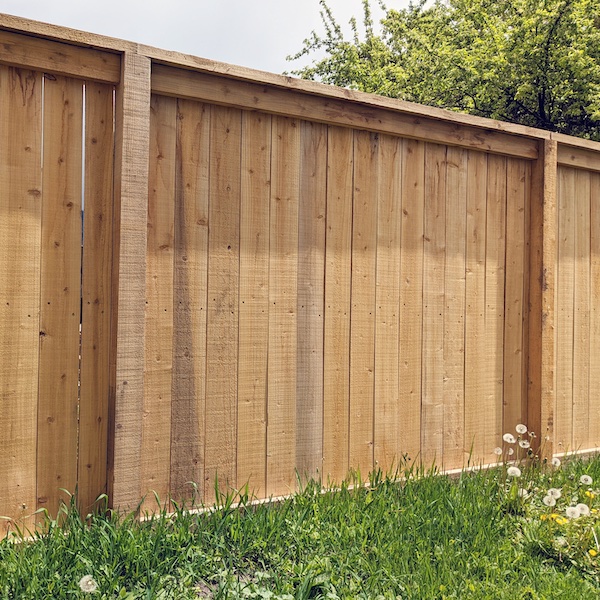All Categories
Featured

Picking the right fence material for your property is a decision that stabilizes visual appeals, capability, and spending plan. Among one of the most preferred options, timber, plastic, and aluminum each deal special benefits and downsides. Recognizing these can help you make an enlightened selection that lines up with your needs. Below's a break down of the advantages and disadvantages of these 3 common secure fencing materials.
Timber Fencing. Timber fence has been a timeless option for house owners due to its natural charm and flexibility.
Pros:. Aesthetic Charm: Wood offers a classic and warm appearance that matches a range of building styles. Customizable: It can be repainted, stained, or reduce into distinct layouts to fit individual choices. Economical: Initially, timber fence can be an affordable alternative contrasted to various other materials. Eco-Friendly: Timber is a renewable energy and can be sustainably sourced. Cons:. High Maintenance: Wood calls for normal sealing, discoloration, or painting to avoid rot, insect damage, and weathering. Longevity Concerns: Without proper care, wood can warp, split, or degeneration gradually, specifically in areas with high moisture. Much shorter Lifespan: A timber fence normally lasts 10-20 years, depending on the kind of wood and degree of upkeep. Timber is suitable for those who value a standard look and want to devote to its upkeep.
Vinyl Fencing. Vinyl is a modern-day, low-maintenance fencing choice that has grown in appeal in recent times.

Pros:. Reduced Maintenance: Plastic does not require painting, staining, or securing and can be easily cleaned up with soap and water. Weather condition Resistant: It holds up against harsh climate conditions without decomposing, rusting, or bending. Durable: Plastic fences can last 20-30 years with minimal upkeep. Variety of Styles: Available in several shades, styles, and textures, some plastic alternatives imitate the appearance of wood. Disadvantages:. Higher Upfront Cost: Plastic secure fencing can be extra expensive originally compared to timber. Brittleness in Cold Weather condition: In severe cool, plastic may crack or come to be fragile. Limited Services: Specific panels can be tough to change, needing mindful matching to the existing fencing. Vinyl is ideal suited for property owners seeking a long lasting, low-maintenance solution with contemporary aesthetic appeals.
Aluminum Fence. Light weight aluminum fence is a durable and lightweight option, often picked for its contemporary appearance and versatility.
Pros:. Rust-Resistant: Aluminum doesn't rust, making it an outstanding option for damp or damp climates. Low Maintenance: Requires marginal upkeep and is easy to clean. Resilient: While lightweight, aluminum is strong sufficient to hold up against numerous environmental problems. Lengthy Life-span: Can last a number of decades without considerable wear or deterioration. Range of Styles: Offers a elegant and streamlined appearance, usually used for ornamental or ornamental purposes. Cons:. Higher Cost: The initial investment for light weight aluminum secure fencing is greater than timber or vinyl. Much Less Privacy: Aluminum fences are commonly made with open pickets, making them less effective for personal privacy. Vulnerable to Damages: Although sturdy, light weight aluminum can be dented by solid impacts. Light weight aluminum is optimal for those seeking a stylish, resilient choice that requires very little treatment.
Making the Right Selection. Each fence material-- aluminum, plastic, and wood-- uses distinct benefits and disadvantages. Your choice ought to depend on your certain priorities, such as budget, upkeep choices, climate, and visual goals:
Choose wood if you love a traditional appearance and don't mind regular upkeep. Choose for plastic if you want a low-maintenance, weather-resistant fence with contemporary allure. Select light weight aluminum if you focus on longevity, corrosion resistance, and a sleek style. By evaluating these cons and pros, you can pick a fence material that boosts your residential property while fulfilling your functional demands.
Latest Posts
Join WyHy FCU – Key Advantages for Your Money Goals
Published May 26, 25
1 min read
Check Out Cost-Effective Auto Repairs with Montclare’s Limited-Time Service Specials
Published May 24, 25
1 min read
Grab Limited-Time Auto Repair Offers in Chicago at Montclare Auto Repair
Published May 22, 25
1 min read
More
Latest Posts
Join WyHy FCU – Key Advantages for Your Money Goals
Published May 26, 25
1 min read
Check Out Cost-Effective Auto Repairs with Montclare’s Limited-Time Service Specials
Published May 24, 25
1 min read
Grab Limited-Time Auto Repair Offers in Chicago at Montclare Auto Repair
Published May 22, 25
1 min read